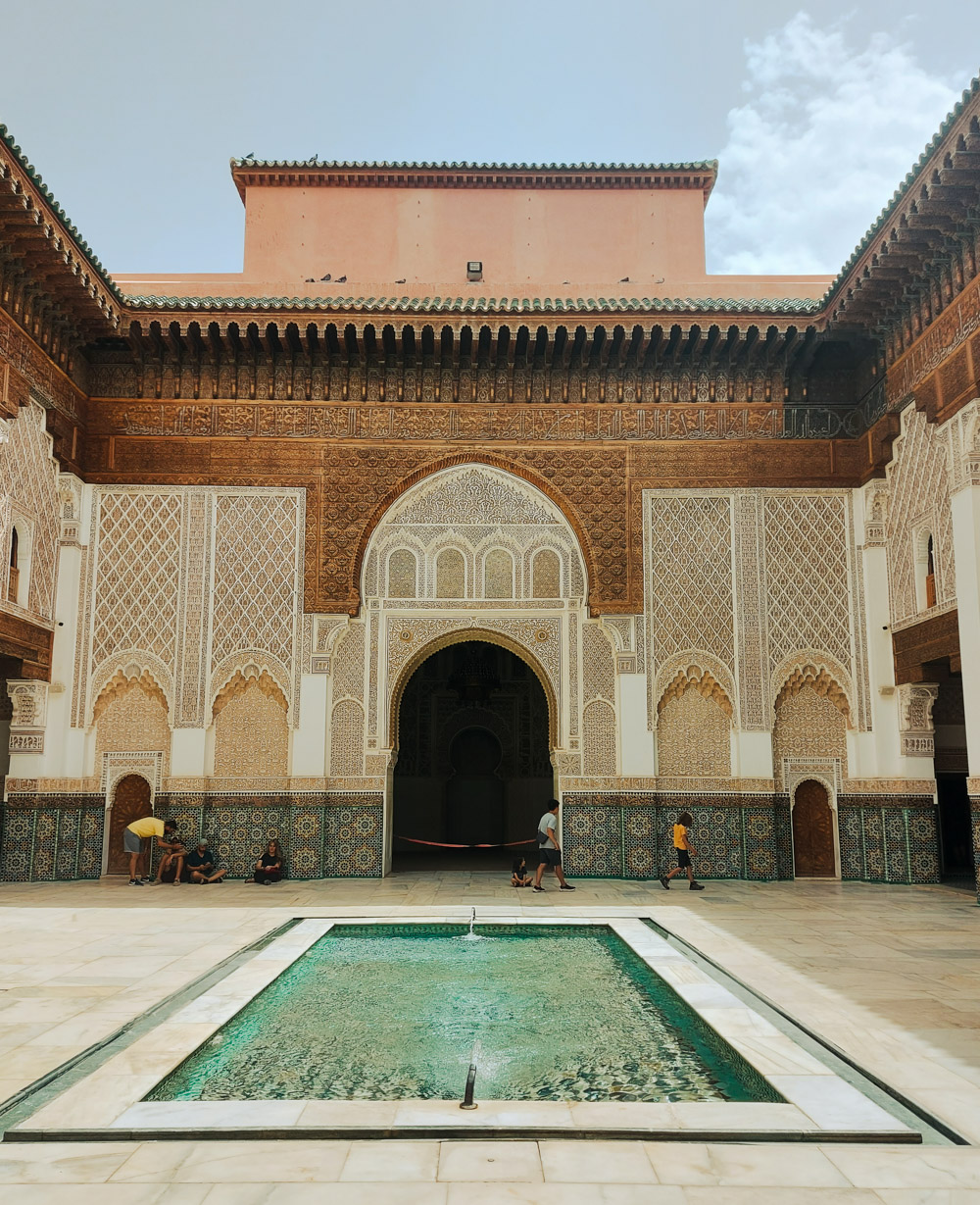Morocco is a beautiful country with a mixture of ancient cities, markets and rural landscapes to explore. It is a great country to tour around but before you plan your trip, here are some top Morocco travel tips. Hopefully this article will make your journey a little smoother!
Train Travel in Morocco
Train travel is a great way to get from city to city in Morocco. It’s an affordable and comfortable way to travel. The prices don’t vary too much in terms of booking in advance vs. on the day but you will save some money by booking in advance. You’ll also save yourself some time as there are often long queues at the ticket office in stations and you cannot buy a ticket on the ticket machines using foreign debit or credit cards. Booking in advance also guarantees you a seat. We didn’t book our first train ahead of time and found that when we arrived at the station the train we wanted was fully booked 30 minutes before departure.
The train carriages are what I would call Hogwarts-express style with little compartments. In second class there are 8 people in a compartment and in first class there are 6. The main difference between first and second is that in first you get comfier seats and slightly more space. There isn’t much difference in price either so I would recommend opting for first, especially on long journeys.
Here are the durations for some of the more popular routes. You can find the prices for these and book on the ONCF website.
| From | To | Duration |
| Marrakesh | Casablanca | 2h 40m |
| Marrakesh | Rabat | 4h 16m |
| Marrakesh | Fes | 6h 30m |
| Fes | Rabat | 3h 20m |
| Fes | Casablanca | 3h 50m |
| Fes | Tangier | 4h |
| Rabat | Casablanca | 1h |
| Rabat | Tangier | 1h 20m |
Getting a Taxi in Morocco and which Apps to use
There are plenty of taxis in the major cities in Morocco. As a tourist you will likely be overcharged. To minimise this as much as possible, agree a price beforehand or ask to go off the metre. You can also uber-like apps such as Roby. You might not be able to book using these apps without a Moroccan bank account but you can still get an estimate price to give you a guide as to what a local would be charged for that journey.
It is common in Morocco for taxi drivers to pick up other passengers whilst you’re in the car so don’t be alarmed if this happens, it will usually just make the fare cheaper for you.
Moroccan Food and Drink
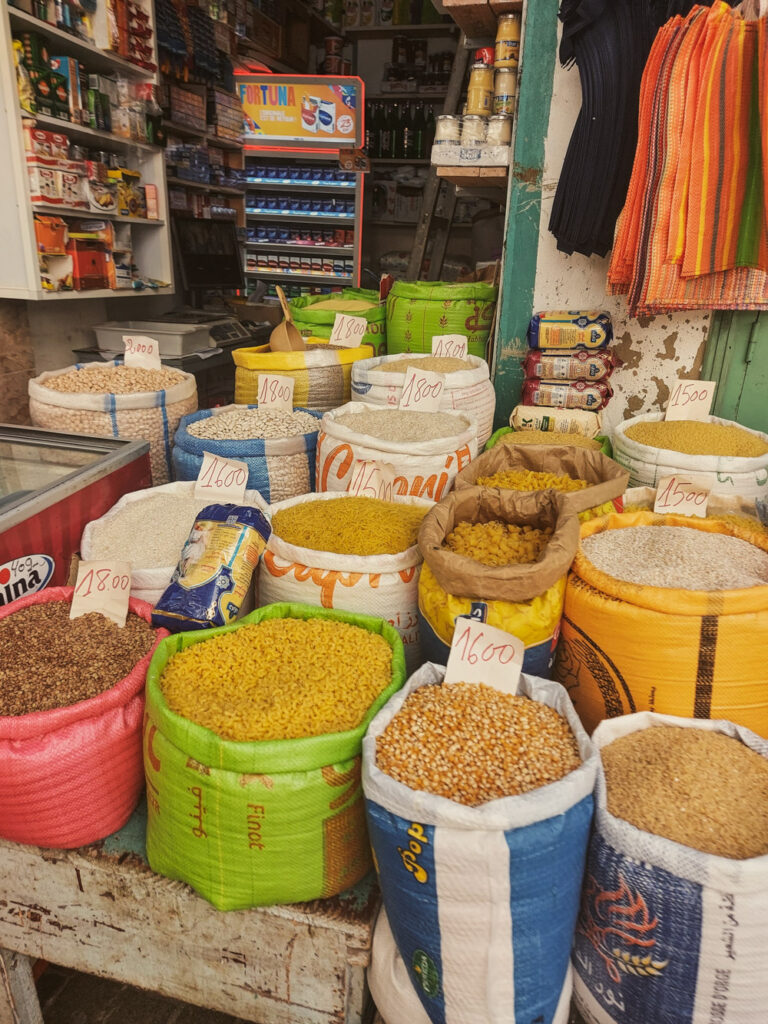
The national dish of Morocco is couscous so you will find this on a lot of menus. You’ll also see tagines offered a lot. The word tagine actually refers to the pot that the meal is cooked in. This is a circular pot with a cone shaped lid, you’ll probably see these for sale in the markets.
For vegetarians and vegans, you will usually find one or two options on traditional moroccan menus. Typically this will be a vegetable couscous and vegetable tagine. I would recommend vegetable couscous over the latter which is essentially just a hot pot of vegetables. We did find a great veggie cafe in Fes – Veggie Pause. Further down the same street there was also a restaurant called Culture Box that had a great range of veggie options.
Don’t expect to find alcohol on the menu in every restaurant. Morocco is a predominantly muslim country, as such alcohol is not illegal but is just not common place. If you’re visiting Marrakech visit the newer Gueliz neighbourhood for bars, clubs and alcohol-serving restaurants.
What to Wear in Morocco
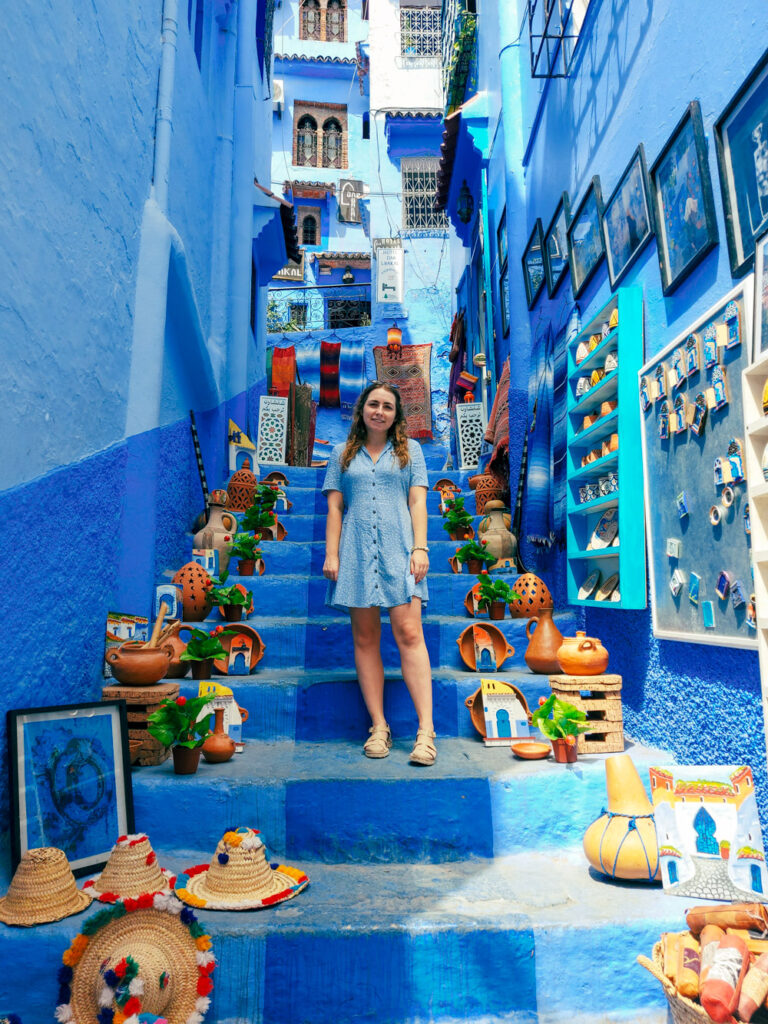
I read a lot about what to wear and the cultural etiquette around clothes before visiting Morocco. Morocco is a muslim country so most women dress very modestly and are almost completely covered. This is a little more relaxed in cities. I initially covered up more than I usually would in 30+ degree heat. But as the days went on, I realised that no one paid much attention to what I wore. I carried around a scarf that I could cover myself with, just in case, but it wasn’t needed. I expected to have to cover myself to enter religious buildings. However, I soon realised this didn’t matter as non-muslims cannot enter mosques anyway.
The only time I felt a little self-conscious of my outfit was on a train, sat in second class with a Moroccan family. There were two young boys sharing one seat opposite me, for most of the journey they stared and giggled at me. I might have just been paranoid but I did then cover my chest.
Harassment
Before travelling to Morocco, I heard lots of horror stories about women in particular being harassed. I think I was very lucky not to experience this at all. It may also have helped that I travelled with my boyfriend and we always stuck together. I have heard from friends that travelled in female-only groups that they were persistently pestered by men.
If this is something you are worried about, I would recommend dressing more modestly, covering yourself from ankles to wrists. You could also stay in the newer parts of cities that are a little less traditional and have fewer dark alleyways to navigate. I’d also recommend travelling first class on trains. It isn’t much more expensive but we found the passengers there tended to be other tourists.
Animal Cruelty
In the main square in Marrakesh – Jemaa El-Fna, you will see lots of food markets, dancing monkeys and snake charmers. I would recommend steering clear of these. The snakes are captured, mutilated and starved. Their mouths are stitch up so only a tiny gap remains causing them to hiss their tongues in a characteristic way that tourists expect. However, this means they cannot feed so eventually starve to death only to be replace by another snake treated in the same way. The monkeys are also mis-treated and illegally captured and traded. Please do not support this type of street performance.
Flying from Marrakesh Airport
I’m not sure why but Marrakesh Airport seemed to operate with slightly different rules than any other airport I’ve been to. This wasn’t noticeable flying in but there are definitely things to be aware of when departing from Marrakesh.
Firstly, you need printed boarding passes as mobile tickets are not accepted. Even if you are just travelling with hand luggage and have checked in online you still need to go to the check-in desks before security.
Be prepared to queue a lot, we had to queue to get into the airport building as bags are scanned on entry. Then we had to queue to check in, then for security, then passport control before the gates. We even had someone check our passport got stamped immediately after passport control. Then finally queuing at the gate. Although it is suggested to arrive 3 hours before you flight for Marrakesh, we arrived around 2 hours before, maybe a little less as we had to wait ages for the bus but we still had plenty of time.
Currency and Money in Morocco
The currency in Morocco is the Morccan Dirhan. It is a closed currency meaning you cannot buy or sell it outside of Morocco. I was pleasantly surprised that many restaurants, museums and attractions accepted card and there were plenty of banks and cash machines around when they didn’t. Some places even accepted Euros although this wasn’t usually the most cost-effective way to pay.
The exchange rate is currently 100 MAD =£8 or €9 . You can expect to may around 5 MAD for a can of coke, 15 MAD for a coffee and around 200 for a meal for two.
Key Words to Know
Here are some key words that will pop up throughout your trip and travel planning.
- Medina – The Medina refers to the old part of town. You’ll find ancient mosques, narrow alleyways and plenty of shops and stalls selling tagines, spices and traditional clothing and carpets. Definitely worth visiting and even staying near.
- Souk – Market, particularly the colourful array of shops found in the Medina.
- Kasbah – A fortress or fortified area of a city.
- Riad – A riad is a traditional Moroccan architectural style in which a house or palace is built around a central courtyard. The courtyards often have pools or fountains. There are lots of hotels and airbnbs set up in riads – I would highly recommend staying in one!
- Dar – A dar is very similar to a riad. Riad actually means garden whereas dar means house. Technically riads should have gardens in the centre, or at least a courtyard big enough for a tree. We found the words were often used interchangeably.
- Bab – Gate. If you see a Bab on a map nearby , take a look as it is likely to be a huge decorated archway which acts as a gateway to the city.
Where to visit in Morocco
Marrakesh
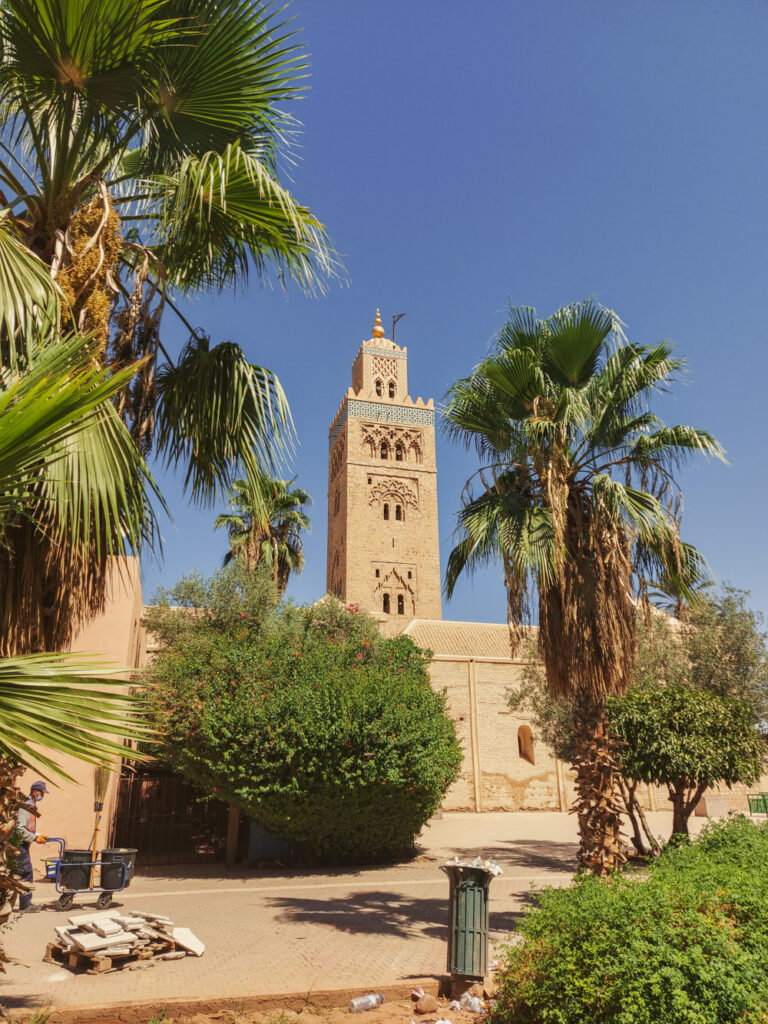
Marrakesh is great starting point for Morocco. The city has a vibrant mixture of the old town and traditional souks combined with the newer more European part of town. There is plenty to explore in and around Marrakesh. Read my Three Day Marrakesh Itinerary for more inspiration.
Fes
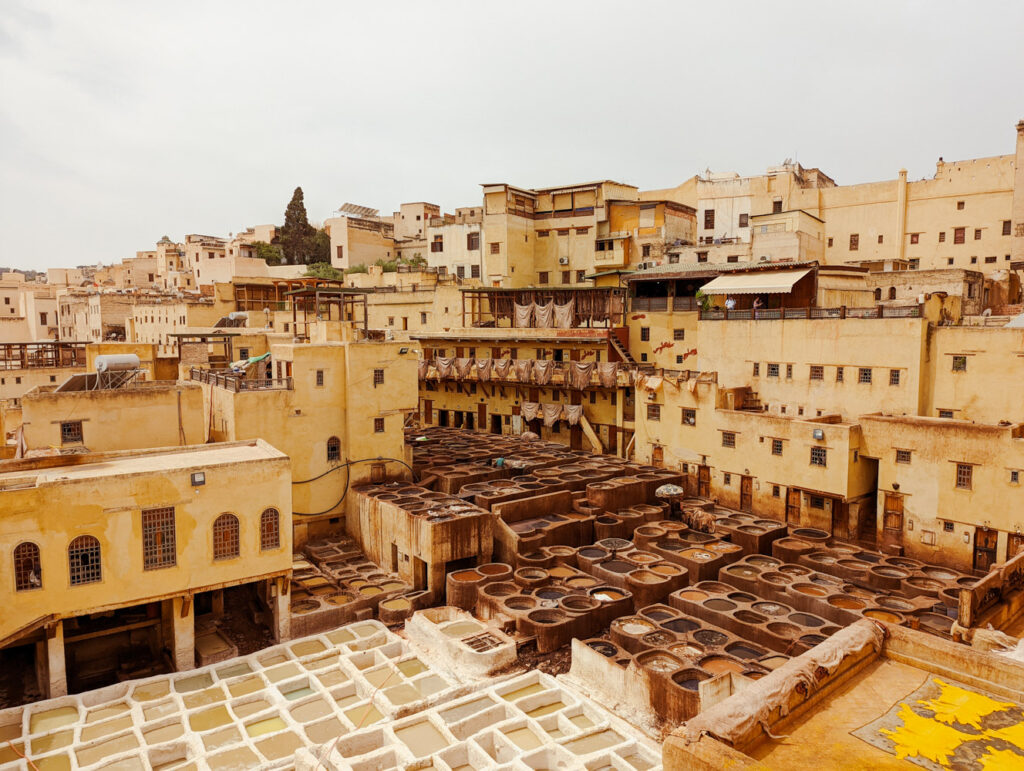
Fes is a fantastic city to visit. It also has a similar array of markets and mosques to Marrakesh. Fes is also famous for its tanneries. Here, leather and suede are still made and dyed using traditional techniques. This includes a potent combination of camel, cow, sheep and goat skins plus ammonia from pigeon poo. Not the nicest smell but still impressive to see.
Rabat
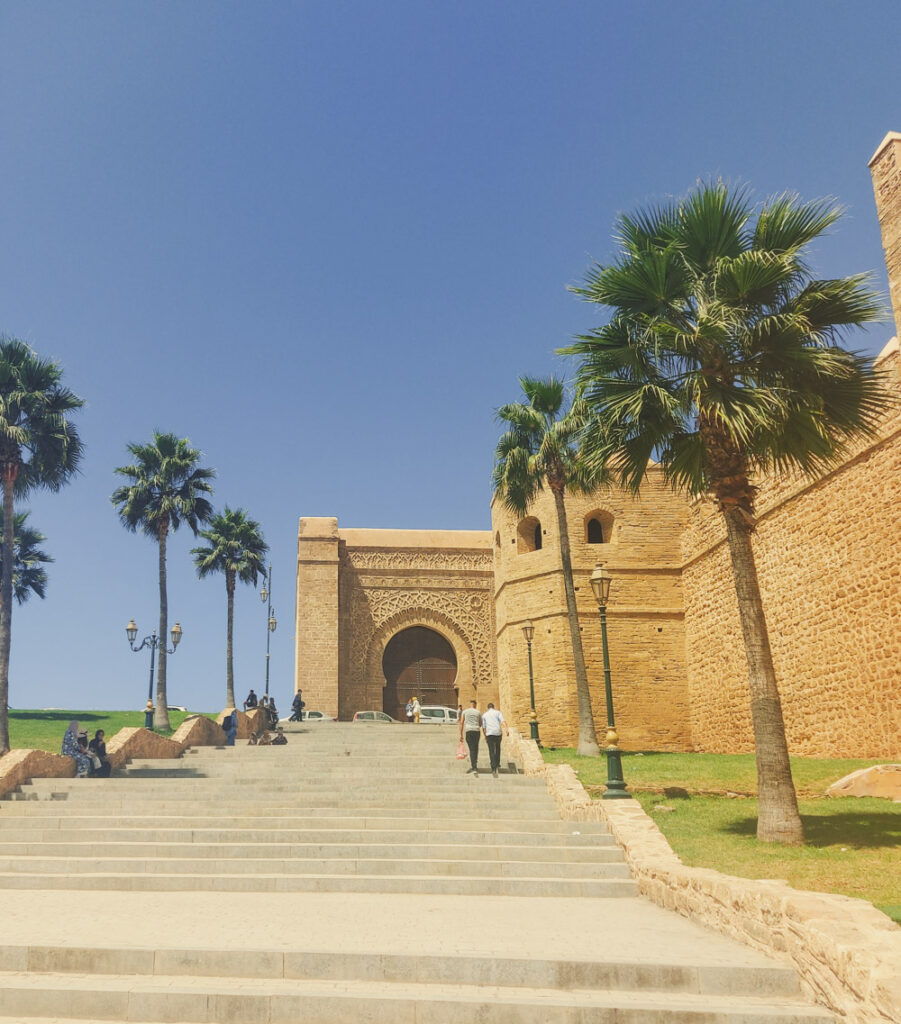
Rabat is Morocco’s capital city. It has elements of a bustling city but also has large sandy beaches. The highlight of Rabat is the Kasbah of the Udayas. This is a beautiful walled town built on the edge of the cliff. The area is filled with clean white-painted houses and the Andalusian Gardens.
Casablanca
Casablanca is a bustling coastal city in Morocco. We visited for a few hours on route from Marrakesh to Fez. Personally, I found that there wasn’t much to see in Casablanca and the parts that we did see were relatively grotty and unremarkable. I do think we didn’t see the best parts and I’m sure there is beauty to be found in Casablanca but I wouldn’t necessarily recommend visiting for your first time in Morocco, unless you have lots of time and want to thoroughly explore the country.
Chefchauoen
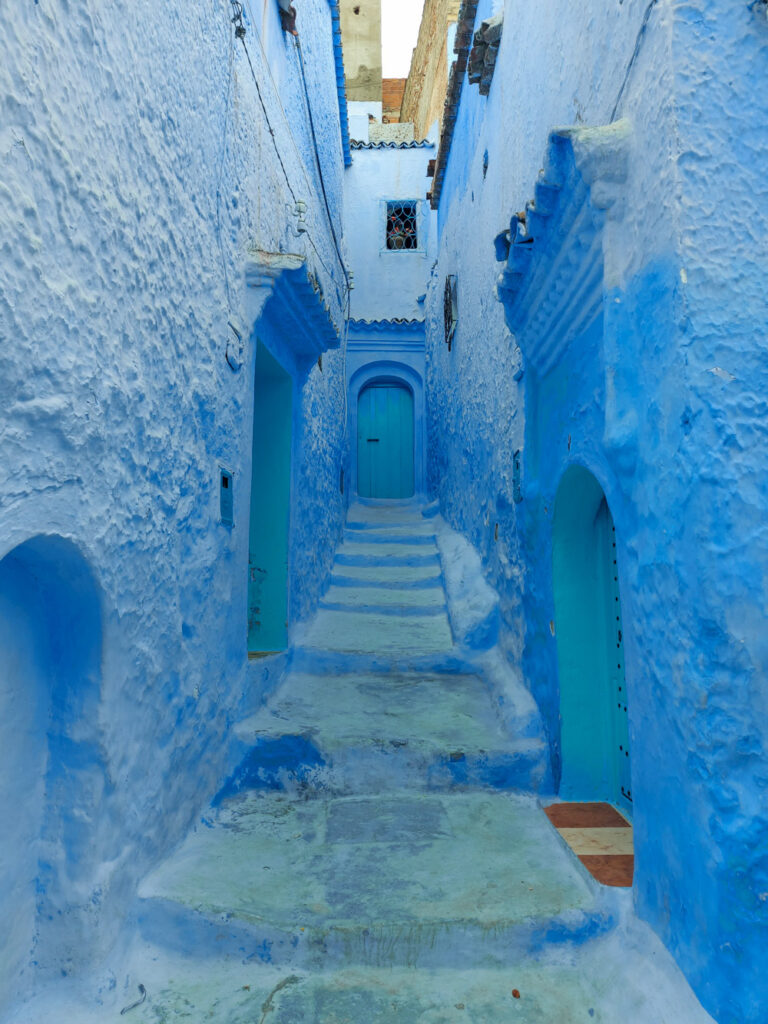
Chefchauoen is also known as the blue city. You might have seen the blue painted buildings and streets all over Pinterest and Instagram. Maybe you thought surely it’s not all that blue. I definitely had my doubts but I can confirm the old town really is that blue. There are some streets and alleys that are curated for photo hot spots but the town really is spectacular. Chefchauoen is around 3-4 hours from Fes and can be visited as a day trip.
Best time of year to visit Morocco
The best time of year to visit Morocco is around spring and autumn. Most of the country is unbearably hot in the peak of the summer. You might find a welcome breeze around coastal areas in the summer but inland is best avoided around July.
In April-May and September-October the temperature in Marrakesh tends to hover around the high 20s (degrees centigrade), with little rain. Fes tends to be a few degrees cooler but still pleasant temperatures in spring and autumn.

